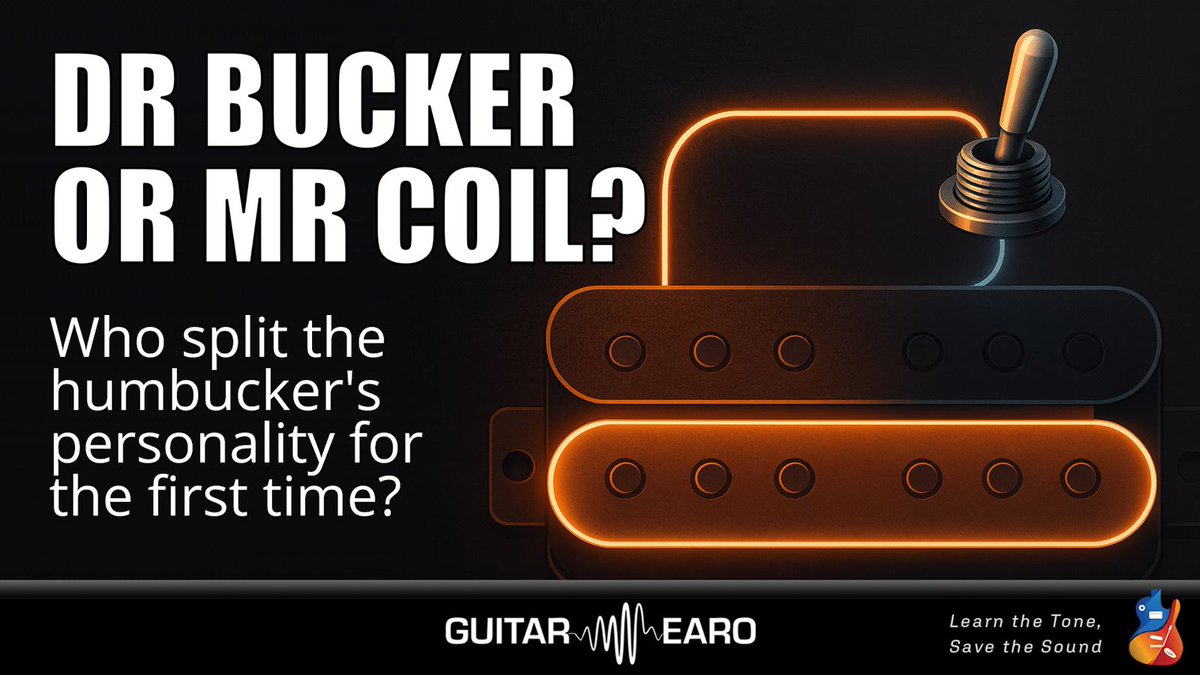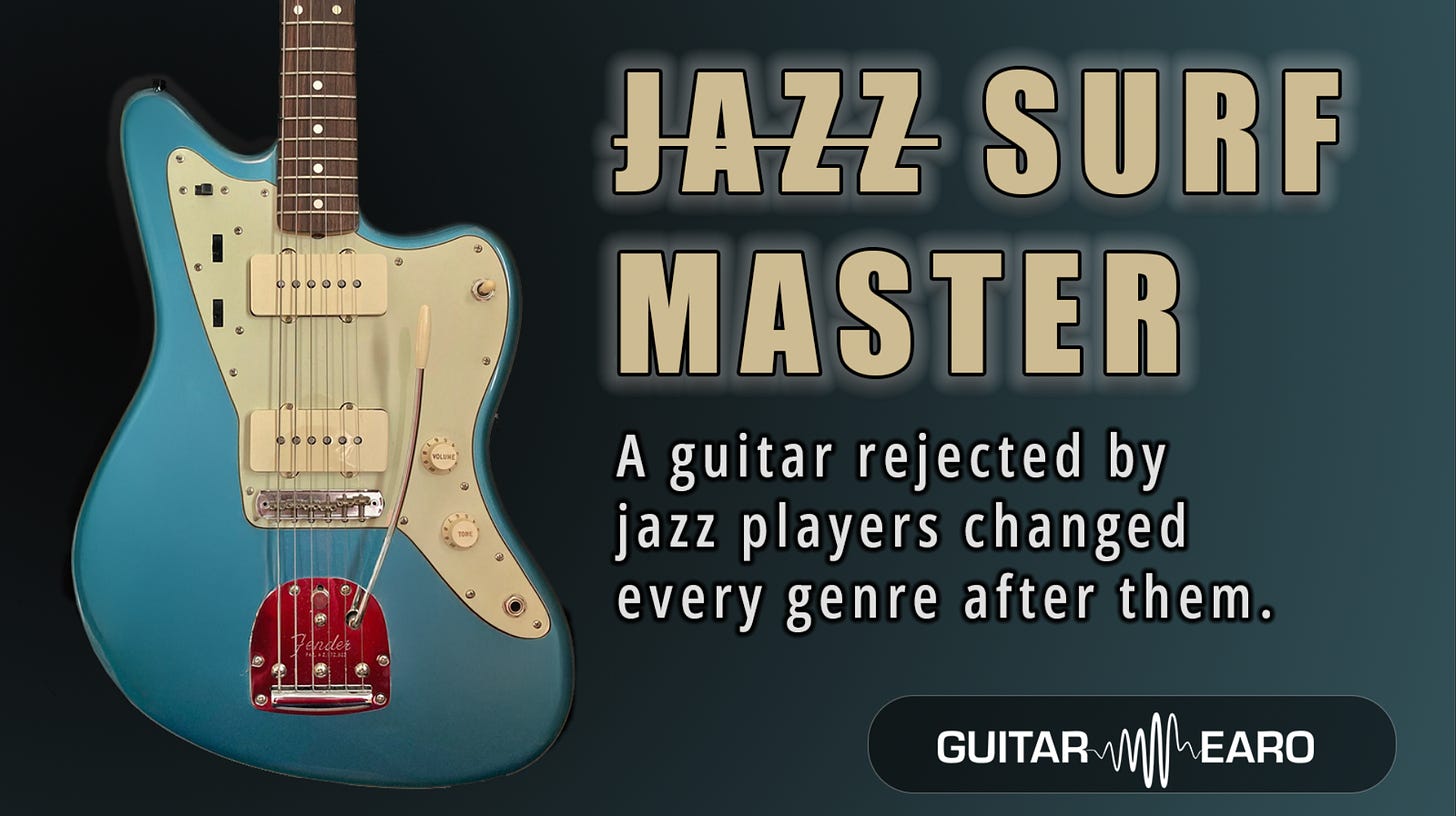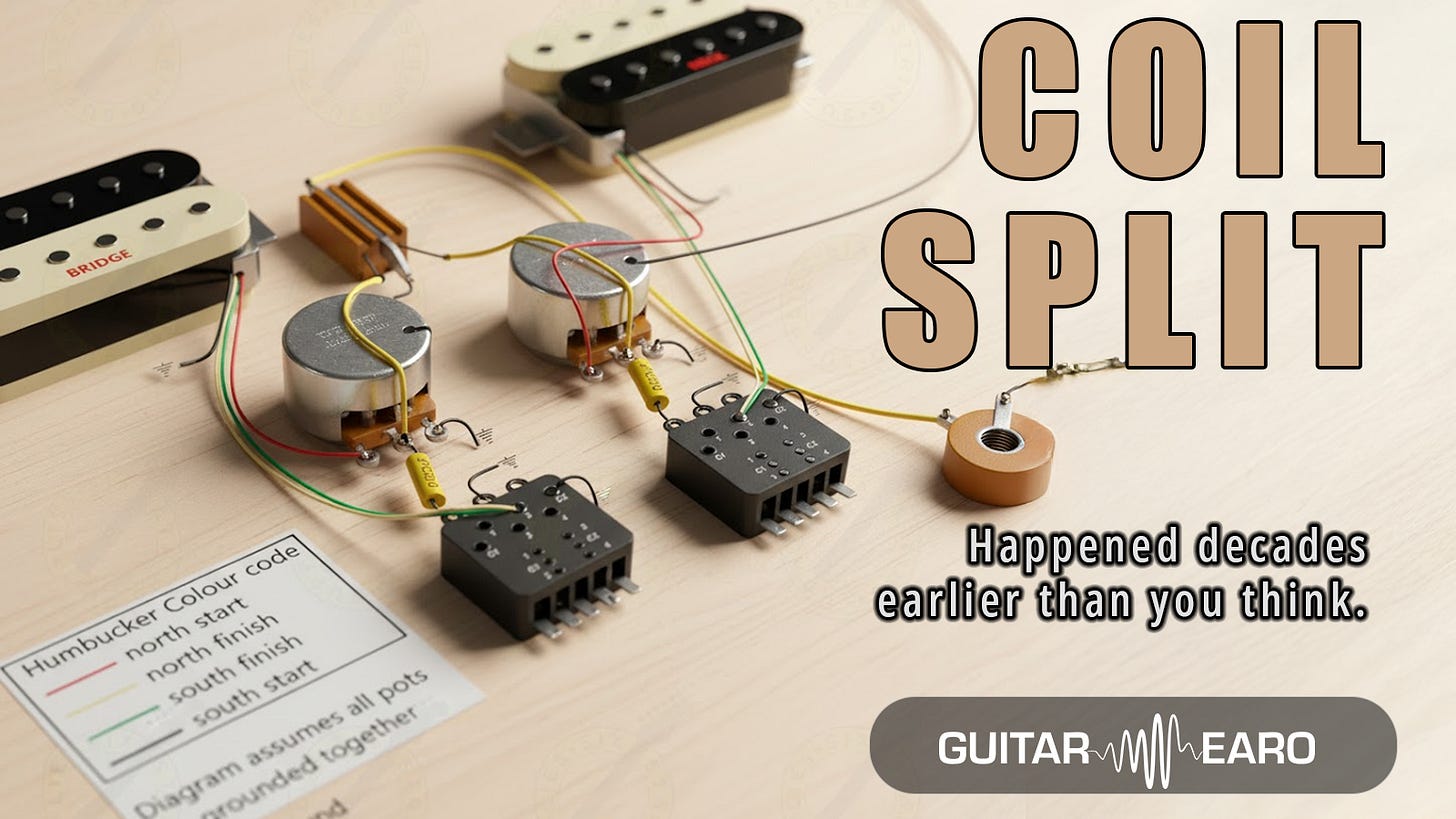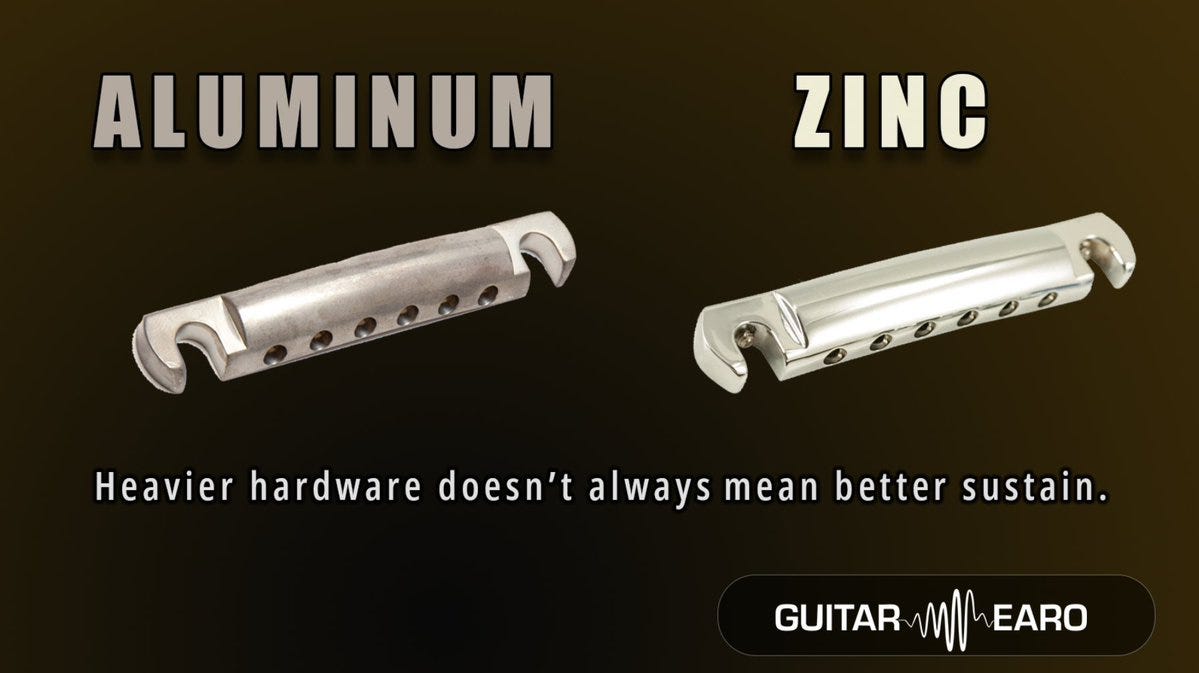Today, nearly every guitarist knows the ritual: pull up the knob, and suddenly your humbucker is a “single-coil.”
It feels obvious now. Almost expected.
But in the mid-1970s, that feature was brand new.And the first companies to try it weren’t Fender, Ibanez, or the super<a href="can-you-hear-the-difference-strat.html">strat</a> makers who later made it famous.
The story begins earlier and with some surprisingly bold experiments.
Humbuckers vs. the Call for Versatility
By the mid-1970s, humbuckers were the gold standard of <a href="colour-and-tone-a-myth-with-a-kernel.html">guitar tone</a>.
They were quiet, warm, and full, perfect for rock, blues, and jazz.
But they had a limitation: they did not sound like the bright, cutting single-coils that defined the sound of a Fender Strat or Tele.
Guitarists wanted both worlds in one instrument.
Some players, like Peter Green, had already experimented with custom wiring and phase reversal. Others, inspired by modding culture, were tinkering with coil cuts at home.
Guitar companies noticed.
Gibson’s Early Experiments
In 1975, Gibson released the L6-S Custom.
It looked like a slightly futuristic Les Paul, but its selling point was hidden in the electronics.
A six-position rotary switch let players access a range of tones, including settings that mimicked single-coils by cutting one coil of the humbucker.
For the first time, a factory-built guitar could convincingly flip character on command.
It wasn’t marketed as “coil-splitting” in the way we use the term today, but the principle was there: give players humbucker warmth and single-coil bite, without changing guitars.
Beyond the L6-S
Gibson doubled down.
By 1978, the Les Paul Artist arrived with even more radical features:
Active circuitry
A dedicated coil-split switch
Expanded tonal palette Les Paul himself might not have recognised
Even earlier, in 1974, Gibson quietly slipped a coil-cut switch into the ES-345TD “Country Gentleman” variant, a feature almost forgotten in the archives.
Meanwhile, boutique-style makers like Carvin jumped on board by the late ’70s, rolling coil-splits across their catalogue as standard options.
It was a small wave of innovation, but it showed that manufacturers were listening to the restless appetite for tonal versatility.
The Catch: Thin Tone
The problem?
Those early coil splits often sounded underwhelming.
Big volume drops
A noticeably thinner, weaker tone compared to true single-coils
Not quite “Strat sparkle,” not quite “Les Paul roar”
As a result, coil splits remained more of a curiosity than a must-have feature through the ’70s.
Enter the Superstrats
Everything changed in the 1980s.
As shred guitar and hard rock exploded, companies like Ibanez, Jackson, and Charvel built “superstrats” with hot humbuckers in the bridge, but guitarists still wanted clean, sparkling tones for ballads, intros, and layered parts.
The solution? Coil-splits that actually delivered convincing single-coil sounds.
By this point, wiring had improved, players had better amplification, and the “one guitar does it all” philosophy became a selling point.
Suddenly, what had been a niche feature in the ’70s became mainstream.
The Takeaway
Mid-1970s coil-splits were imperfect, sometimes even disappointing.
But they planted the seed for the modern Swiss-army guitar.
Today, versatility is standard.
A push-pull pot is as common as a tone knob, and even traditionalist brands like Gibson offer coil splits on core models.
It happened because, half a century ago, a few builders decided to take a risk on wiring experiments that most guitarists hadn’t even asked for yet.
Like many innovations in guitar history, the coil-split wasn’t born from a single “Eureka!” moment.
It was a gradual, sometimes clumsy attempt to give players more voices from one instrument.
And in doing so, it helped redefine what “standard features” on an electric guitar could be.




